

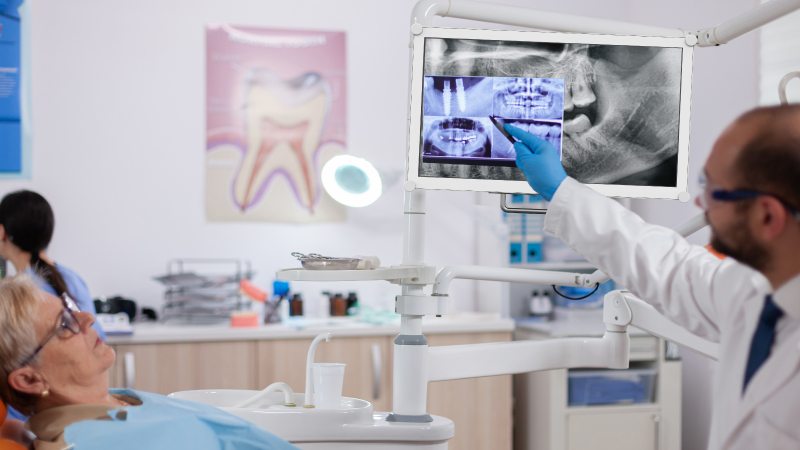
Consumer-grade monitors may be perfectly fine for office work or watching videos at home, but in dental clinics, they can actually compromise patient safety. Unlike displays designed for medical use, these general-purpose screens often lack the grayscale precision and brightness consistency required for interpreting dental images such as X-rays or CBCT scans.
That’s where dental monitors come in — engineered to meet strict DICOM compliance, these displays offer superior image clarity, disinfection-ready surfaces, and long-term reliability. If your clinic is still using consumer-grade screens, here are the top 5 reasons why it’s time to make the switch.
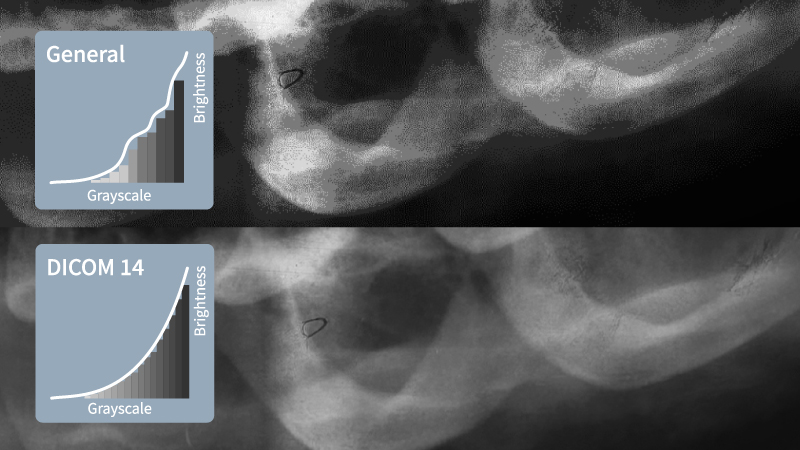
For dental digital imaging, DICOM compliance is a fundamental requirement. X-ray and CBCT images follow the DICOM standard, ensuring that grayscale tones, brightness, and contrast are rendered accurately for proper diagnosis.
A monitor without DICOM mode cannot properly display these images, leading to incorrect brightness levels, contrast inconsistencies, and loss of critical details. Without DICOM compliance, radiographic images may appear too bright or too dark, making it difficult to assess bone structures, root conditions, and periodontal health accurately.
In dental practice, DICOM is used to ensure the accurate visualization of:
While DICOM compliance is essential, it alone is not enough to guarantee optimal diagnostic accuracy. The monitor’s grayscale performance, bit depth, and color accuracy also play a critical role in accurately interpreting dental images.
In contrast, dental imaging displays are DICOM Part 14 compliant, ensuring precise grayscale accuracy. This allows for consistent and reliable rendering of radiographs, improving diagnostic confidence and reducing the risk of misdiagnosis.
| Feature | Consumer-Grade Monitor | Dental Imaging Display |
| DICOM Part 14 Compliance | ❌ No | ✅ Yes |
| Grayscale Accuracy | ❌ Inconsistent | ✅ Optimized for X-rays and CBCT imaging |
| Contrast Calibration | ❌ Poor | ✅ Ensures accurate detail visibility |
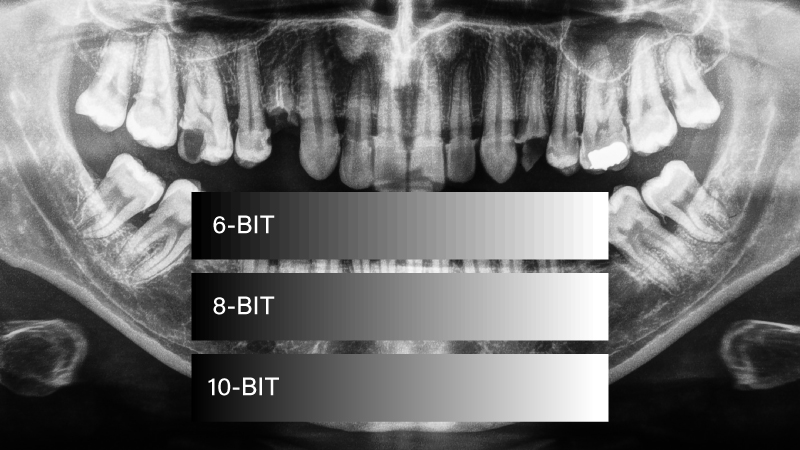
Even if a monitor supports DICOM, its grayscale rendering and bit depth must also be optimized. Subtle variations in grayscale intensity allow dentists to detect fine details in bone structures, fractures, and root conditions.
However, some monitors with DICOM mode may still lack adequate grayscale accuracy due to insufficient bit depth. Many consumer-grade monitors use 6-bit + FRC (Frame Rate Control) instead of true 8-bit grayscale depth, leading to:
Poor grayscale differentiation, making it harder to detect slight variations in bone density.
Color banding and inaccurate contrast, which can obscure fine details in radiographic images.
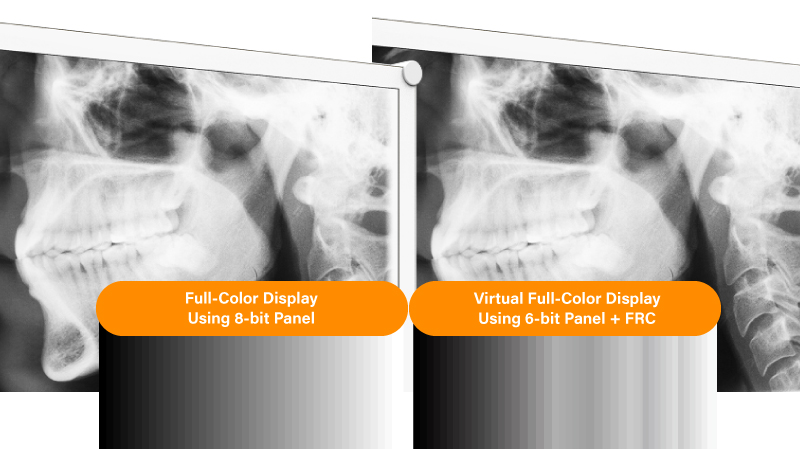
6-bit + FRC (Simulated 8-bit) – Can produce artificial grayscale transitions, leading to potential image distortion and misinterpretation.
True 8-bit grayscale and above – Provides smoother grayscale gradations, ensuring clear and precise visualization of X-ray and CBCT images.
In contrast, DICOM Part 14-compliant dental imaging displays with true 8-bit grayscale depth ensure:
| Feature | Consumer Monitor | Dental Imaging Display | High-End Medical (Dental) Display |
| Color Depth | 6-bit + FRC (Simulated) | ✅ True 8-bit (16.7M colours) | 🔵 True 10-bit (1.07B colours) |
| Use Case Suitability | Not suitable for clinical use | Ideal for dental clinics and chairside diagnosis | Best for radiology, pathology, surgery |
| Cost-to-Value Ratio | 💸 Low cost, low value | 💡 Balanced performance and cost | 💰 High cost, high spec |
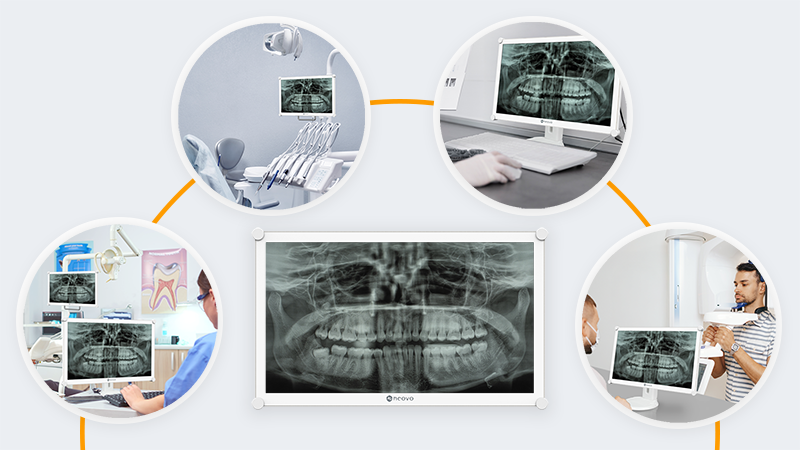
While grayscale performance is crucial for radiographic imaging, color accuracy (ΔE) ensures consistent image representation across multiple displays in a dental practice.
| Monitor Type | Delta E (ΔE) | Color Accuracy | Impact on Dental Use |
| Consumer-grade Monitor | ❌ ΔE > 3 | Noticeable color shifts | May result in mismatched restorations and color inconsistencies across different screens |
| Dental Imaging Monitor | ✅ ΔE ≤ 2 | Highly accurate and consistent color reproduction | Ideal for shade matching and soft-tissue visualization |
While Delta E may not be as critical as grayscale accuracy for radiographic diagnosis, it plays a key role in shade accuracy, patient communication, and image consistency across devices. Reliable color rendering builds trust and enhances the clinical experience for both dentists and patients.

Monitors in dental clinics are frequently exposed to disinfectants and cleaning agents, making durability and cleanability essential. Consumer-grade monitors often lack protective coatings, which can degrade over time with repeated cleaning, affecting image clarity. Professional dental displays use reinforced glass and antimicrobial coatings, ensuring long-term durability and hygiene.
| Feature | Consumer-Grade Monitor | Dental Imaging Display |
| Resistance to Disinfectants | ❌ No special protection | ✅ Alcohol and disinfectant-resistant for frequent cleaning |
| Scratch-Resistant Glass | ❌ No | ✅ Reinforced glass with antimicrobial coating, ideal for clinics |
📌 Potential Risks:

Dental clinics often have limited space, requiring flexible monitor installation on dental chairs, walls, or CBCT viewing stations. Consumer-grade monitors offer limited mounting options, while dental imaging displays support multiple installation methods and feature medical-grade power supplies to ensure compatibility with other dental equipment.
| Feature | Consumer-Grade Monitor | Dental Imaging Display |
| VESA Mount Compatibility | ⚠️ Limited | ✅ Compatible with dental chairs, walls, and equipment installations |
| Medical-Grade Power Supply | ❌ No | ✅ Meets medical safety standards, reduces electrical interference |
📌 Potential Risks:
Watch how the DR-2202 outperforms consumer-grade monitors in dental imaging.
Through this comparison, you should now recognize the significant differences between consumer-grade and dental imaging displays. While many clinics continue using standard monitors, these devices fail to meet the requirements for diagnostic imaging, color accuracy, durability, and clinical adaptability.
👉 Don’t let the wrong monitor compromise your clinic’s accuracy and patient trust. Discover the best dental display for your needs—🔗 Read our expert guide: “How to Choose a Dental Monitor
